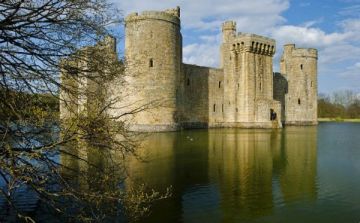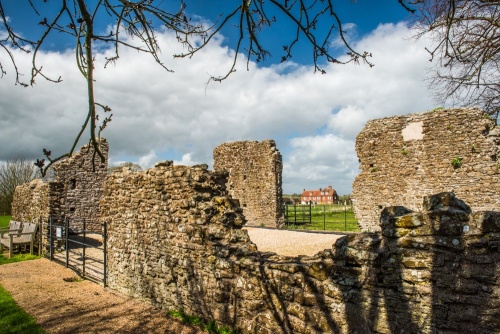
The roofless ruins of a 14th-century building thought to be linked to the Black Friars stand on Rectory Lane in Winchelsea. The ruins, known as Blackfriars Barn, hide a secret, as below the ground is a vaulted cellar with very early medieval carvings of ships. Visitors can view the carvings by taking part in regular tours organised by local charity groups.
History
The Dominican Order, or the 'Black Friars' as they were popularly known, had a tough time of it in Winchelsea. For a start, they weren't supposed to have a presence in the town at all; when Edward I established the new planned town in 1281, he specified that only the Franciscan Order of Friars Minor, or Grey Friars, could build a friary there.
In 1318, his son, King Edward II, gave a 12-acre plot of land in Winchelsea to the Dominican Order so they could erect a friary. Unfortunately, the site was so far away from the busy commercial centre of Winchelsea that very few locals worshipped in the friary church, and as a result, the friars received very little income in the way of alms.
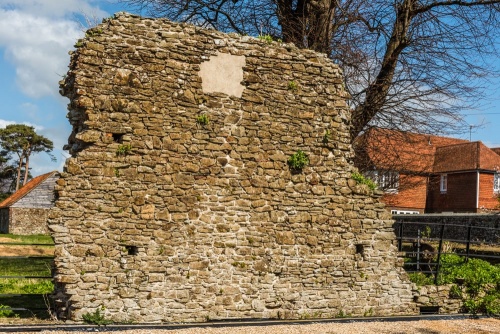
In 1339 William Batan gave the Dominicans 6 acres of land, probably situated near the harbour. We don't know for certain that the Blackfriars ever built on the land, but if they did, they soon realised that it was unsuitable, for just a few years later in 1342 the pope granted them the right to move to a different part of town because their friary was in peril of being swept away by the sea.
What happened next is unclear, but in 1356 Edward III granted them an acre of land in the centre of Winchelsea as well as five messuages next to this parcel of land (a messuage meant a house and its outbuildings). In 1372 the King granted them leave from paying rent on the five properties, and this right was confirmed by Henry VI in 1429.
We know very little about the friary beyond the names of several priors. In 1402 Henry Secton, prior of Winchelsea, made the mistake of supporting Richard II against Henry IV, and the king issued a warrant to arrest him for high treason, which would have carried the death penalty. Whether the prior was ever tried is unknown. We know that Hugh Stonard was appointed prior in 1439, but the next we hear of the friary comes in 1538 when it was dissolved by Henry VIII.
The Bishop of Dover, Richard Yngworth, reported that the friary was ruinous, and its furniture fetched ã10 when sold.
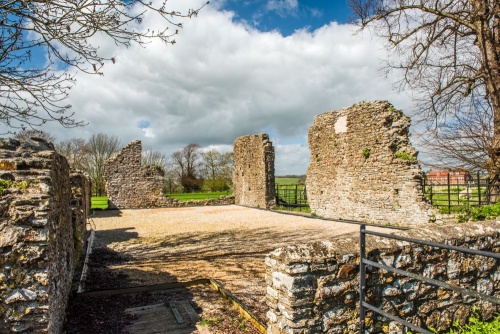
The Ruins
The first question to answer is, are the ruins we see today actually the remains of Blackfriars friary? The short answer is that we aren't sure, but it is likely that the friary was located some distance to the north.
Is there anything that links the ruins to the friary?
No, not beyond the traditional name of Blackfriars Barn.
What we do know is that it is not a domestic building, which has given rise to the theory that it may have had a civic function, possibly as a minor guild hall. Above ground, we can clearly make out the remains of a sizeable hall. From Tudor maps, it would appear that the building was already in ruins in 1525, long before Blackfriars was suppressed. One theory is that it was destroyed in the devastating French raid in 1360.
We do know from town records that the ruins had been converted into a barn by 1842, though by the 18th century the undercroft seems to have been used as a rubbish tip. The cellars were filled with rubble, household waste, glass, and thousands of pieces of broken pottery.
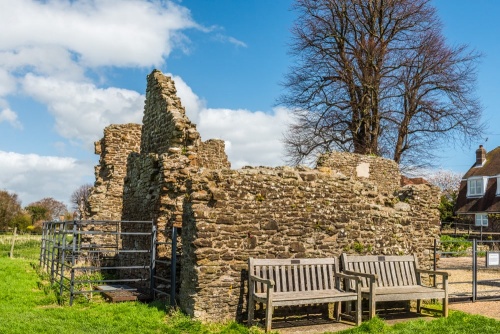
It is clear, however, that the remains date to the early 14th century, around the time that Edward II gave the Dominicans land to build a friary. Historians seem certain that an earlier building is incorporated into the north wall.
The original building stood three bays long and was laid out at right angles to the street. It measures internally 11.1m x 8.9m (roughly (36.4 x 29.1 feet). At the rear of the building was a chamber with two doors, one leading to a detached building. To one side was a garderobe turret, and you can still see the remains of a cesspit beneath this at ground level.
The north wall survives to almost full height, but the south wall is much lower. You can see the remains of a fireplace flanked by a pair of niches in the south wall.
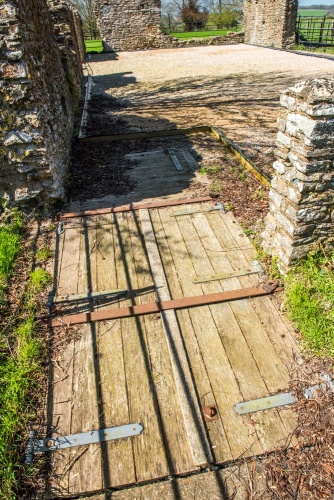
The Undercroft
The undercroft, or cellars beneath the ruins cover three chambers, accessed by a flight of steps that start in the southeast corner. These are now protected by a plank hatch, locked for safety outside tour times.
The front and rear chambers had roofs supported by quadripartite vaulting and were illuminated by two windows linked to lightwells. A fireplace is set into the wall of the front chamber.
The front and rear chambers are linked by a five-bay barrel-vaulted room without windows. A staircase was later inserted to link this central chamber to the neighbouring house to the north.

Cellar Tours
Though the remains above ground are interesting in their own right, it is the 15th and 16th-century graffiti that makes Blackfriars Barn worth visiting. The best of the carvings are to be found on the north wall of the rear chamber, where at least a dozen distinct carvings have been revealed.
Several of the carvings overlap each other, suggesting that they were carried out over a long period of time. Most are very crudely carved.
This 'fleet' of carved ships is among the earliest found in England. The presence of the carvings is a reminder that Winchelsea was once a thriving port.
Two organisations run regular cellar tours; Friends of the Ancient Monuments (FOAM) and Winchelsea Archaeological Society (WAS). These tours take in not just Blackfriars Barn but other historic medieval cellars around Winchelsea.
Getting There
Blackfriars Barn stands opposite the Methodist Chapel on Rectory Lane, a very short stroll from the town centre. There is no dedicated parking, but we found it easy to find parking space along a town centre street.
Note that the above-ground ruins are accessible at any time, but the only way to view the cellars is by taking one of the tours mentioned above.
About Blackfriars Barn, Winchelsea
Address: Rectory Lane,
Winchelsea,
East Sussex,
England, TN36 4EY
Attraction Type: Historic Building
Location: Opposite the Methodist Chapel on Rectory Lane
Website: Blackfriars Barn, Winchelsea
Location
map
OS: TQ903173
Photo Credit: David Ross and Britain Express
HERITAGE
 We've 'tagged' this attraction information to help you find related historic attractions and learn more about major time periods mentioned.
We've 'tagged' this attraction information to help you find related historic attractions and learn more about major time periods mentioned.
Find other attractions tagged with:
NEARBY HISTORIC ATTRACTIONS
Heritage Rated from 1- 5 (low to exceptional) on historic interest
Winchelsea Court Hall Museum - 0.1 miles (Museum) ![]()
Winchelsea, St Thomas the Martyr Church - 0.1 miles (Historic Church) ![]()
St John's Hospital - 0.3 miles (Historic Building) ![]()
Camber Castle - 1.4 miles (Castle) ![]()
Lamb House - 2.1 miles (Historic Building) ![]()
Rye Castle Museum - 2.2 miles (Museum) ![]()
Rye Art Gallery - 2.2 miles (Museum) ![]()
Northiam, St Mary - 6.6 miles (Historic Church) ![]()
Nearest Holiday Cottages to Blackfriars Barn, Winchelsea:
Winchelsea Beach, East Sussex
Sleeps: 4
Stay from: £352 - 1181
More self catering near Blackfriars Barn, Winchelsea



